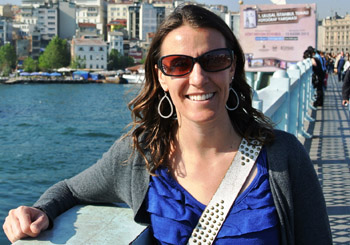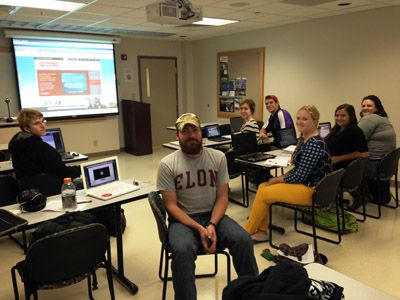
Melissa Kravetz
Melissa Kravetz and Jenna Leventhal first met as undergraduate history majors at UC Santa Barbara over 10 years ago. Now, they are working together to introduce students to testimony through IWitness.
Leventhal is IWitness manager at USC Shoah Foundation, and it was through her that Kravetz, now an assistant professor of history at Longwood University in Virginia, decided to use IWitness in her class on Modern Germany this semester. Kravetz said she was looking for an innovative project for her small class (only seven students), and Leventhal suggested that Kravetz assign her students a “digital essay.”
Their assignment was to each create a 4-5 minute video in IWitness about German identity before, during and after World War II, focusing on one person in the Visual History Archive and how his or her sense of identity changed during that time. The videos included at least three clips of testimony (from only one testimony), five images, five textual explanations and 30 seconds of reflection at the end. Kravetz said by only allowing them to include one testimony and limiting the videos to five minutes, she wanted her students to practice discerning the best sources for a particular paper or research project.
“I wanted them to use their research skills, like they would at a library, to sift through a lot of testimony and decide which one would actually work in their argument,” Kravetz said.
Kravetz said she was very impressed with the videos her students made. The videos were very polished and many had really grasped the idea of testimony and how it could be worked into an academic argument. The most common feedback they provided about the assignment itself, in fact, was that they wanted the videos to be longer so they could include more content.

On the last day of class, she screened all the videos and invited her colleagues from the department to come watch as well, and the dean of the Longwood University College of Arts and Sciences decided to use the project as an example of innovation in the college.
Though she may make some changes to the assignment, Kravetz said she’s interested in assigning it again in her Nazi Germany class next year. She was unsure at first that there would be enough relevant testimonies for her students to choose from, but was pleasantly surprised by the breadth and depth of topics contained in the Visual History Archive.
“The testimonies were really spot-on,” Kravetz said. “It’s almost as if [the survivors] read my essay questions beforehand.”